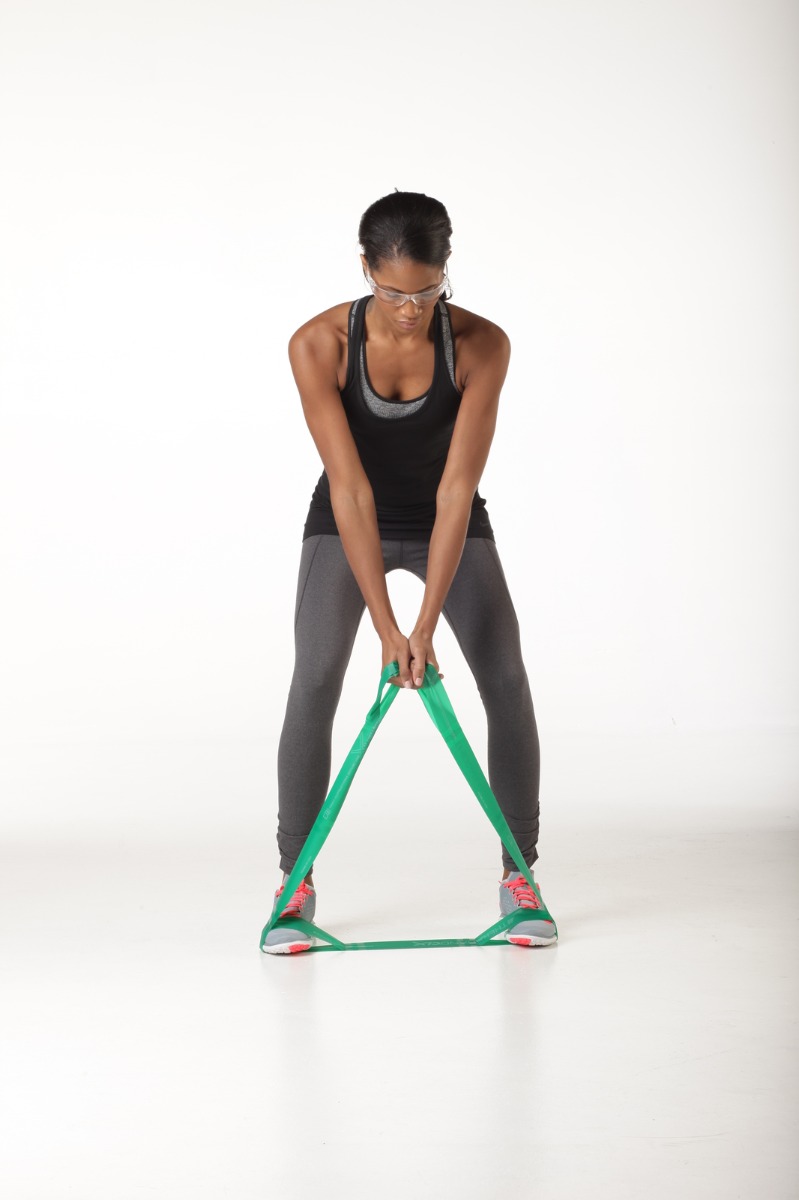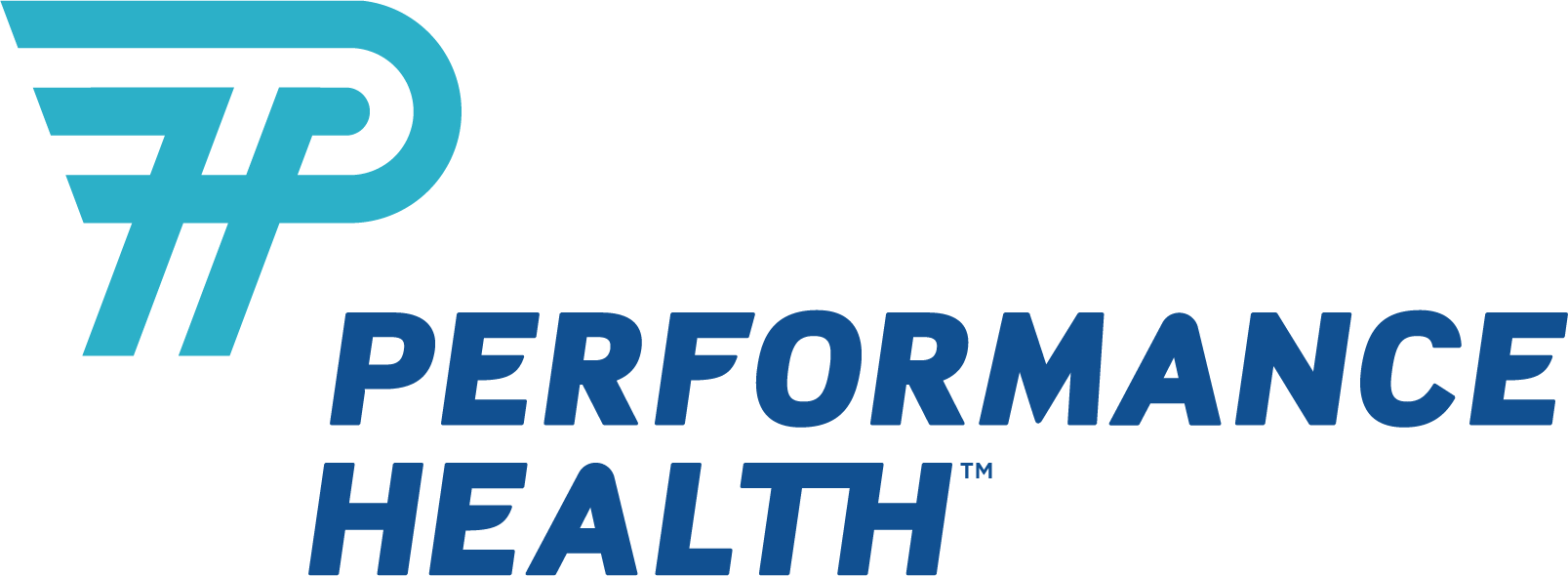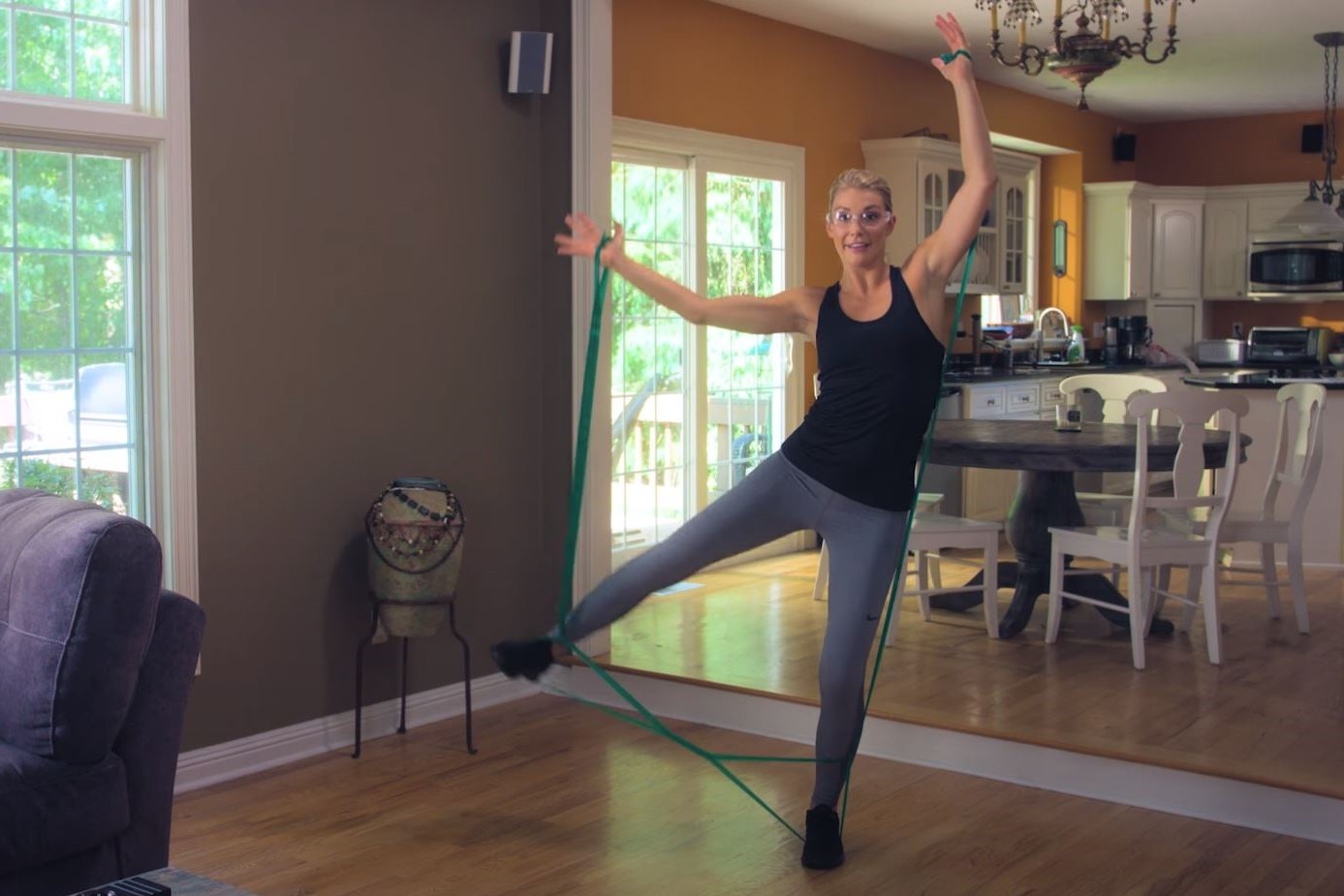Alternative Options to Dumbbells: Exploration of Elastic Resistance for Your Patients

Key Takeaways
- Resistance bands are equally effective compared to traditional weight-lifting and provide a low impact option to protect the joints and reduce risk of injury
- Three big benefits to choosing resistance bands over free weights include: linear variable resistance, constant tension, and exercising multiple planes
- Elastic resistance products such as TheraBand CLX, TheraBand Loop Band, and TheraBand 5.5m Bands offer a wide variety of upper and lower body exercises
Top Products in This Article
People are spending more and more time at home, and buying exercise equipment they never needed before. The sudden surge in demand has created shortages of dumbbells. If you're having a difficult time purchasing a set, we have an alternative that helps take up less space in your clinic and saves you money! Plus, your patients can use the same product at home that they use during rehabilitation and therapy.
What’s our solution? Resistance bands! Research shows that they are equally effective compared to traditional weight-lifting and they’re a low impact option to protect your patients’ joints. A wide range of resistances allow you to use them for everything from rehabilitation to strength training.
Learn more about why we recommend choosing resistance bands instead of dumbbells when working with your patients!
- Does elastic resistance really equal free weights?
- 3 Benefits of Using Elastic Resistance Instead of Weights
- Why Use TheraBand Elastic Resistance?
- Ready to get started? Try these TheraBand CLX Exercises!
- What if your clinic already has dumbbells? Add resistance bands!
Does elastic resistance really equal free weights?
What does the research say?
Study Title: Effects of training with elastic resistance versus conventional resistance on muscular strength: A systematic review and meta-analysis2
Authors: Jaqueline Santos Silva Lopes, Aryane Flauzino Machado, Jéssica Kirsch Micheletti, Aline Castilho de Almeida, Allysiê Priscila Cavina, and Carlos Marcelo Pastre
Summary: One meta-study wanted to clarify and quantify the benefits of elastic resistance compared to conventional devices given the practicality, low cost, and effectiveness. It looked at data from 8 studies that compared elastic resistance products (TheraBand resistance bands and tubes) to conventional devices (dumbbells and weight machines). They found that elastic resistance promoted similar strength gains and an equal effectiveness when compared to conventional resistance equipment in different populations using diverse protocols.
Read the full study here: https://www.ncbi.nlm.nih.gov/pmc/articles/PMC6383082/
What do the pros say?
“As a coach who has now had to adapt to the online or at home platforms, I have found that more people are able to purchase resistance bands over traditional dumbbells. I have always programmed my classes with resistance bands, but now more than before I am using them in the at home setting!” - Jackie O’Leary, MS group fitness instructor
Check out how TheraBand Elastic Resistance compares to traditional dumbbells!

3 Benefits of Using Elastic Resistance Instead of Weights
There are three big benefits to choosing resistance bands over free weights.
- Linear Variable Resistance
- Imagine yourself doing a bicep curl using a dumbbell. At the start, it’s difficult to begin the motion. You might need to cheat a little with a micro-swing or even get aid from a spotter before your bicep muscles engage.
- Resistance bands don’t have this problem. Thanks to linear variable resistance the band is lighter at the bottom with more slack and as you curl upwards the resistance increases. This provides tension when you want it for strength building.
- In fact, one study found that elastic resistance training provides more control and optimises muscle activation throughout the entire exercise.4
- Constant Tension
- When you’re doing a bicep curl, as you reach the top of the curl there’s another lull-point. It’s easy to rest in this spot with little muscle engagement due to the composition of your arm. But this is when you should be contracting the muscle. A resistance band offers constant tension through the entire range of motion to help build muscle.
- Multiple Planes
- Weights provide resistance in just one plane, vertically, due to gravity. But resistance bands provide the resistance themselves allowing them to be in multiple planes. These are great for functional exercises.
- For example, consider a football player who can bench 170 kg, his strength is focused entirely on his upper body. But when he stands up, other muscles in the core and lower body must also engage. That’s why resistance bands can be a great complement to an existing workout programme for athletes so they can build their core stability and full body power.
- At the same time, the bands naturally limit range of motion to help prevent the joints from being overextended and injured during exercise.
Why Use TheraBand Elastic Resistance?
TheraBand CLX, TheraBand Resistance Bands, and TheraBand Loop Bands provide similar muscle activity compared to weight training, but they also offer additional benefits. For example, the bands offer a lower amount of force on the joints, reducing the risk of injury. Choose TheraBand the inventors of elastic resistance when you buy your bands. It’s been a trusted brand for over 40 years and offers a colour-coded progression system making it easy to grab the band strength you need!



Choose your resistance!
Depending on your patients’ abilities and goals, the TheraBand CLX or TheraBand Resistance Bands might be best type of band for them. TheraBand has the broadest range of resistance options in the industry with TheraBand CLX, TheraBand High Resistance Bands, and TheraBand Loop Bands. Elastic resistance items are easy to store allowing you to stock the full range in your clinic and choose what’s best for each individual patient!
What can I treat with resistance band exercises?
There are a wide variety of exercises that your patients can do with elastic resistance. Elastic resistance can be used for upper and lower body exercises from push-ups to squats. They can be used before and after a hip replacement, to treat a shoulder impingement or rotator cuff tendinopathy as a part of your cardiac rehab protocol, for injury prevention or prehab in sports like volleyball, or to strengthen muscles in athletes like baseball players, and more! Check out these example exercises that include the muscle groups they engage and find more exercise protocols for specific conditions on Performance Health Academy.
Ready to get started? Try these TheraBand CLX Exercises!
Get started with this 7 minute CLX workout!
Follow along with the video or check out the written instructions below. This workout is a great example of the variety of exercises that resistance bands allow you to perform.
CLX Squat to Overhead Press
- Place each foot into one of the centre CLX loops and hold one end loop in each hand
- Raise your hands up to shoulder height and lower into a squatting position. Keep your knees parallel to the floor and sit back like you're sitting into a chair
- Stand up and bring your arms up above your head in a press
- Repeat the full body movement moving from a squat to a press and back
Muscle Engagement:
Gluteal muscles, and quads, upper chest, trapezius, upper back, and triceps
CLX Bird Dog
- Place each foot into one of the centre CLX loops and hold one end loop in each hand
- Get into position on all fours, resting on your hands and knees. Extend your left leg and right arm at the same time until they are parallel to the floor
- Slowly return. Switch sides and repeat the movement
Abdominals, lower back, gluteal muscles, and thigh muscles
CLX Upright X-Row
- Place each foot into one of the centre CLX loops and cross the CLX band in front of you forming an ‘X’
- Grip one of the end loops in each hand. Stand in a slightly bent over position
- Pull the CLX band up to about chin height, then return to your starting position
Upper trapezius, deltoids, and biceps
CLX Lateral Straight Leg Raise
- Place each foot into one of the centre CLX loops and hold one end loop in each hand. Raise your hands up to shoulder height
- Raise your arms up above your head. Keep your left arm straight overhead, keep your right arm straight and lower it to your side even with your shoulder
- At the same time, balance on your left leg and bring your right leg up and out to the side
- Return to your starting position and repeat (for a challenge remain balancing throughout the exercise). Switch sides and repeat
Hip flexor, core, and abductor muscles
CLX Sit to Stand
- Sit on a chair without resting your back on the backrest. Place each foot into one of the centre CLX loops, with the loops closer to your toes
- Hold one end loop up your arm to each shoulder and stand up
- Sit back down slowly just touching the edge of the chair before standing back up. Repeat, keeping your core tight throughout the exercise
Gluteal muscles, quads and core
CLX Front Raise
- Place each foot into one of the centre CLX loops and hold one end loop in each hand
- Stand with your feet shoulder-width apart. With your palms facing the floor, lift your arms up in front of your body to shoulder height
- Keep your core tight during this exercise. Slowly lower your arms down to their starting position and repeat
Anterior deltoids, trapezius, erector spinae, biceps, pectorals, rotator cuff, serratus anterior and abs
CLX Tricep Kickback
- Place each foot into one of the centre CLX loops and hold one end loop in each hand
- Stand with a slight bend in the knees. Bend at your arms so your hands are near your shoulders
- Kickback, extending your arms behind you and squeezing your triceps and repeat
Triceps
CLX Pressing Fast Feet
- Place each foot into one of the centre CLX loops and hold one end loop in each hand
- Start lifting your feet in a fast-feet motion and press your arms out like you’re pushing someone away
- Bring your arms back in and repeat, continuing to do fast-feet throughout the exercise
Quads, anterior deltoid, pectorals, rotator cuff, and abs
What if your clinic already has dumbbells? Add resistance bands!

You can add in resistance bands to your patient’s existing dumbbell or bodyweight exercises for an extra challenge and more of a full body workout.
Check out these dumbbell + resistance band exercises!
DB x CLX Squat
- Place each foot into one of the centre CLX loops and hold one end loop in each hand
- Place dumbbells in each hand, and raise your arms out straight at shoulder height.
- Option: Straighten arms so that they are at your side. This will be easier due to the amount of resistance on the band
- Lower into a squatting position. Keep your knees parallel to the floor and sit back like you're sitting into a chair
Muscle Engagement:
Gluteal muscles, quads and core
DB x CLX Sit to Stand
- Sit on a chair without resting your back on the backrest. Place each foot into one of the centre CLX loops, with the loops closer to your toes
- While holding each end loop, grab both dumbbells and rest them at shoulder height. Press equally through both feet and stand up
- Sit back down slowly, just touching the edge of the chair before standing back up. Repeat, keeping your core tight throughout the exercise
Gluteal muscles, quads, and core
DB x CLX Front Raise
- Place each foot into one of the centre CLX loops and hold one end loop in each hand
- Use one dumbbell for this exercise and hold one end of the dumbbell in each hand
- Stand with your feet shoulder-width apart. While holding the dumbbell, lift your arms up in front of your body to shoulder height
- Keep your core tight during this exercise. Slowly lower your arms down to their starting position and repeat
Anterior Deltoids, trapezius, erector spinae, biceps, pectorals, rotator cuff, serratus anterior, and abs
DB x Bicep Curl
- Begin by standing on the resistance and with both feet shoulder-width apart
- Hold the band and dumbbells with both hands, palms facing up toward the ceiling
- Keep your core and glutes engaged through this whole exercise – like a standing plank
- Curl your hands upward towards your shoulders, while keeping your elbows at your sides
- Slowly return to your starting position and repeat
Biceps, gluteal muscles, and core
DB x Lunge
- Place the band over your shoulder
- Stand with one foot in front of you and one foot behind you
- Stand on the band with your forward foot
- Grab both dumbbells in each hand
- Go into a lunge
- Bend your back leg into a kneeling position
- Keep your knee over your ankle as your front leg moves into position
- Push back up to your starting position and repeat
- Switch to the opposite leg and repeat
Quads, gluteal muscles, and hamstrings
DB x Tricep Extension
- Place the band over your shoulder
- Stand with one foot in front of you and one foot behind you
- Stand on the band with your back foot
- Grab 1 dumbbell
- While holding 1 dumbbell press band overhead while holding the dumbbell in a goblet position
- Slowly, lower dumbbell behind head
- Push arms back up to overhead extension and repeat
Quads, gluteal muscles, and hamstrings
Looking for tubing, flat bands, or accessories?
References
- Grage, J. (2019). Resistance Bands vs. Free Weights. Undersun. Retrieved from https://bit.ly/2JDXRdL
- Lopes, J., Machado, A. F., Micheletti, J. K., de Almeida, A. C., Cavina, A. P., & Pastre, C. M. (2019). Effects of training with elastic resistance versus conventional resistance on muscular strength: A systematic review and meta-analysis. SAGE open medicine. Retrieved from https://bit.ly/3ewSQz8
- Moore, Rebecca. (2016). Give Home Programms a Boost with the TheraBand CLX. Performance Health Academy. Retrieved from https://bit.ly/3jGGWV7
- Page, P. (2013). Quantifying torque in elastic resistance exercises (Part I). Performance Health Academy. Retrieved from https://bit.ly/38kUbbo
- Quilty, Susan. (2020). 10 Benefits of Using Resistance Bands During Exercise. Gaiam. Retrieved from https://bit.ly/2F8oS7k
Medical Disclaimer: The information provided on this site, including text, graphics, images and other material, are for informational purposes only and are not intended to substitute for professional medical advice, diagnosis or treatment. Always seek the advice of your physician or other healthcare professional with any questions or concerns you may have regarding your condition.






 US
US France
France Australia
Australia










